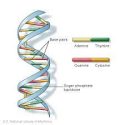Development Year: 1977
Inventor: Fredrick Sanger
Description: DNA sequencing is a laboratory technique used to determine the precise sequence of nucleotides within a DNA molecule. It involves the process of identifying the order of the four bases – adenine, guanine, cytosine, and thymine – in a strand of DNA. Advanced sequencing technologies enable rapid processing of large amounts of DNA, allowing for detailed genetic analysis.
Functionality: DNA is extracted and then divided into small fragments. Each fragment is copied in a reaction that includes DNA polymerase, a mixture of normal nucleotides, and specially labeled terminator nucleotides that stop the sequence at specific points. These terminators are tagged with fluorescent labels that emit different colors for each of the four DNA bases (adenine, guanine, cytosine, thymine).During the sequencing process, the DNA fragments are separated by size using a technique called capillary electrophoresis. As the fragments pass a detector, the fluorescent tags emit light, which is recorded. The order in which the colors are detected corresponds to the sequence of bases in the DNA. The sequence data is then analyzed and interpreted using computer software.
Source: https://frontlinegenomics.com/a-history-of-sequencing/#:~:text=First%20generation,him%20his%20second%20Nobel%20Prize.

